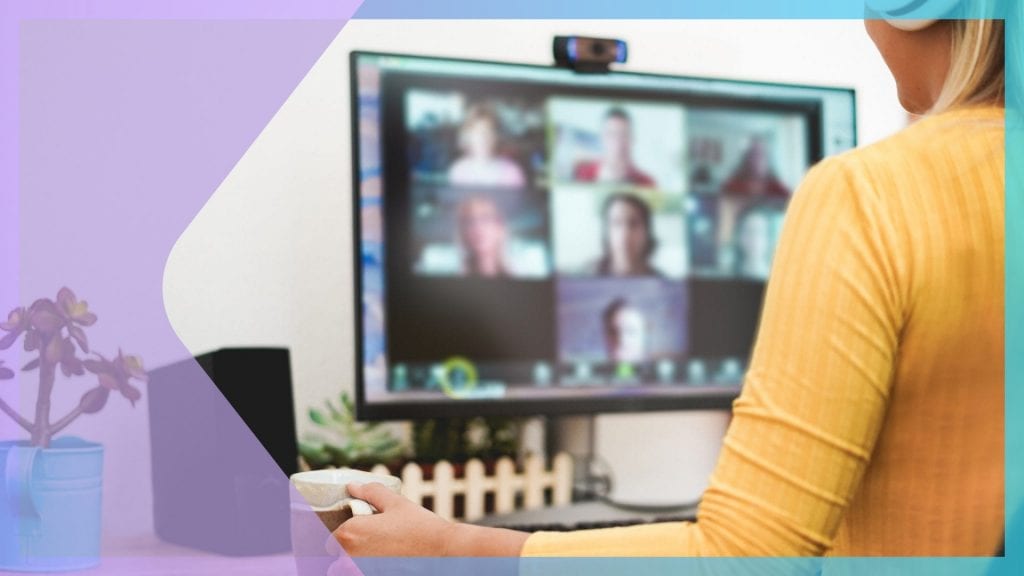The Major Differences between Traditional and Online Focus Groups (Pros & Cons)
As you consider options for your next focus group, compare traditional (in-person) vs. online focus groups for market research.

More people are working at home and using technology than ever before. A 2020 report by Global Workplace Analytics predicts by the end of 2021, 25%-30% of the workforce will work from home several days a week. The firm reports regular work-at-home has grown 173% since 2005.
What does this mean for researchers? You might get more success with focus groups by adding online focus groups to your marketing research mix. Depending on your target audience, your research subjects may prefer participating in a focus group online. Remote tools and platforms make conducting an online focus group easy.
Of course, remote market research does have some challenges. It may exclude participants who aren’t tech-savvy. And if you’re looking for feedback on something tactile, like a gadget or food product, in-person research may be better.
As you consider options for your next focus group, look at the similarities, differences and advantages of traditional (in-person) vs. online focus groups for market research.
How are In-Person and Online Focus Groups Similar?
In both in-person and online focus groups, you’d interview a small group of about 6-12 participants. This number ensures everyone can contribute to the discussion and you can get detailed answers. You’ll want to carefully target and screen participants to find ones who meet your target audience.
You’ll also want to use an interview guide and enlist a skilled focus group facilitator. The interview guide should contain questions to elicit the insights you’re looking for. The most important questions should be asked earlier during the session to ensure there’s time to answer them. The facilitator should also be flexible and ask follow-up questions or for clarification if needed.
The facilitator should be an expert in eliciting meaningful conversation, excluding personal bias from the discussion and keeping the group on track. With both types of focus groups, a facilitator should mitigate issues like groupthink or having one person dominate the conversation.
Differences Between In-Person and Online Focus Groups
The first major difference between online and in-person focus groups is the setting. Businesses might host an in-person focus group in a conference room or at an off-site location. Virtually, the online focus group setting is within a video conferencing tool, like Zoom or Skype.
Another difference is the view the researcher and group gets of the participants. In an in-person focus group, entire body language is on display. An online focus group is more focused on facial expressions.
To successfully start an in-person focus group, all participants will need to be present in the room. To begin a virtual focus group, all participants must have downloaded the required app, created an account and logged in successfully. For an online focus group to work, the technology must also work.
Besides those points, the content and discussion of a focus group can be similar whether everyone’s in a single room or the setting is an online format. Considering these differences, each format has advantages and disadvantages.
In-Person Focus Group Advantages
- Participants might feel more comfortable contributing to a discussion in person.
- Researchers can observe full body language of participants.
- Participants may not be comfortable using technology to attend a focus group.
- Focus group discussions can be observed in real time via video feed or in an adjacent room.
In-Person Focus Group Disadvantages
- The focus group location may be undesirable for participants to travel to. This could discourage participation or affect participants’ mood upon arrival.
- The target audience may prefer a virtual format and may not be willing to participate in an in-person focus group.
- In-person focus groups limit participation to a single geographic location. This can introduce biases into sample sizes and exclude meaningful contributors.
- In-person focus groups may be delayed if participants get stuck in traffic or experience obstacles or personal issues along the way to arrival.
Online Focus Group Advantages
- A virtual format makes it convenient for participants to attend from any location.
- When using Zoom for virtual focus groups, a business can turn on automatic live captions for Zoom. This Zoom live captions feature ensures each participant understands what others are saying, which can lead to more meaningful discussions. It also makes focus groups more accessible to the hearing impaired.
- Online focus groups enable participation from anywhere in the world. This can make a focus group more diverse and representative of the intended audience.
- Virtual focus groups can be instantly recorded for easy distribution among teams.
- Online focus groups may lower costs, since they eliminate the need to reserve a physical space.
Online Focus Group Disadvantages
- Compared to face to face focus groups online focus groups require technology to work.
- Technology that fails during an online focus group can be disruptive and cause the discussion to stall or go off track.
- Technology may frustrate certain participants, which may influence the quality of their discussion.
- Researchers may only be able to observe participants’ facial cues, not full body language.
- Participants need to have equipment that includes a webcam, which may exclude certain participants.
What’s Better: In-Person or Online Focus Groups?
There are both in-person and online focus group advantages and disadvantages. Depending on the audience you want to research, one method may be better than the other.
If you want the opinions of a group from one specific geographic area, or your target audience isn’t tech-savvy, in-person might be better. If you want a more diverse interview pool and want to make the focus group convenient to a tech-savvy audience, virtual focus groups are great options.
It helps to be mindful that professionals of all generations are comfortable using computers and technology. An August 2020 report by Statista found 85.8% of Americans use the internet. As remote work continues to rise, so will comfort with computer technology
Like any form of primary market research , before organizing your focus group, you’ll want to laser-focus on the subjects you want to interview. Once you know their demographics and have created customer personas for your product or service, you can determine which focus group format is best for your business.
You could also try both ways and compare the results to see what works better.
Want to make your online focus groups more efficient? Check out our Zoom integration.















